American Samoa (the one that didn’t move Time Zones last year) was the last, at 11:00 GMT today.
London put on a fantastic display, a fitting end to a remarkable year.
Stole the pictures off the TV
Of course, if the French had had their way we would have been celebrating around 10 minutes earlier….
It all goes back to Hipparchus, a Greek mathematician and astronomer around 2200 years ago. He devised a method of dividing the globe up with latitude and longitude lines to chart the then known world. Charting was all very well, but navigation for the early mariners was tricky.
Latitude, north/south position, could be obtained fairly accurately by measuring the height of the Pole Star (or the Southern Cross in the Southern Hemisphere) above the horizon, and comparing the result with astronomical tables. But with no fixed reference points east or west, dead reckoning had to be employed, with estimates of speed and drift not always accurate.
Another problem with dead reckoning was being able to reliably measure the passage of time.
This was acceptable during the period of early exploration, but as maritime trade increased a solution to the accurate time measurement problem was considered vital, so important in fact that the British Government offered a prize of £20,000 for a reliable timepiece design. Clocks had been around for a while, but none were capable of withstanding the rigours of a long sea voyage and still keep good time.
A Yorkshire carpenter and self-taught clockmaker, John Harrison, designed and built a prototype “Sea Clock” in 1730 which was accurate in calm conditions but suffered during pitch and yaw of the boat’s hull during rough weather. After 43 years of experiments and tests he finally perfected a reliable model, able to keep good time in all conditions. Unlike the earlier models, the “Sea Watch” resembled an oversized pocket watch, but far more intricate inside.
Although he claimed the £20,000 prize, supported by Captain James Cook and even the King, Parliament refused to accept that his design met the criteria laid down, and grudgingly awarded £8,750.
Use of a marine chronometer is basically simple. Knowing that the sun is highest in the sky at a fixed point at noon, the distance around the globe can be calculated by checking the time of the noonday sun at the sailors current position. If it was +6 hours different (6 o’clock in the afternoon according to the chronometer), for example, the position must be at the 90º from the fixed starting point. 6 hours/24 hours x 360º (one earth rotation).
Now you can see how important it was to have an accurate timepiece. Of course, it’s all done by GPS now….
Anyway, to get back to the French. As maritime commerce increased a global standard for time was needed. Of the three contenders for the “Prime Meridian”, the 0º meridian, Antwerp in Holland was an outsider, the observatories just outside Paris and at Greenwich were the favourites.
Greenwich had an advantage, however, in that seamen from all over the world were loading and unloading at the docks in the city, and habitually corrected their timepieces to Greenwich time.
At a conference in 1884 Greenwich was almost unanimously voted for, France abstaining.
GMT was born.
France, having taken the huff, didn’t adopt the standard for another 30 years.
The Paris Observatory lies 2º20’ east of Greenwich, so the sun is at it’s highest around 10 minutes earlier here. And midnight would also occur 10 minutes earlier….
Back to the present, we had a great surprise today, George and Carol (The Rockers) and Chas and Ann (The Lifers) came over.
They are moored over on the Shroppie and had transport available so decided to spend the afternoon with us.
Last year we were together in convoy at this time, this year it’s not been possible but this was the next best thing. Thanks guys!

It looks finally like the Mayans were wrong, the world didn’t end on the 21st December 2012. Although, strictly speaking, they didn’t predict apocalypse, it’s people’s interpretation of the fact that their calendar ended then. If they apply the same criteria to my calendar, the end of the world will come on Thursday. I’ve no more diary entries after that….
Now we know we’ve got one,
have a Great New Year!
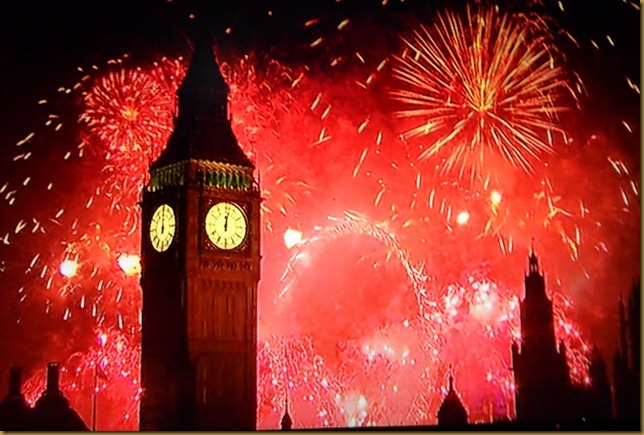
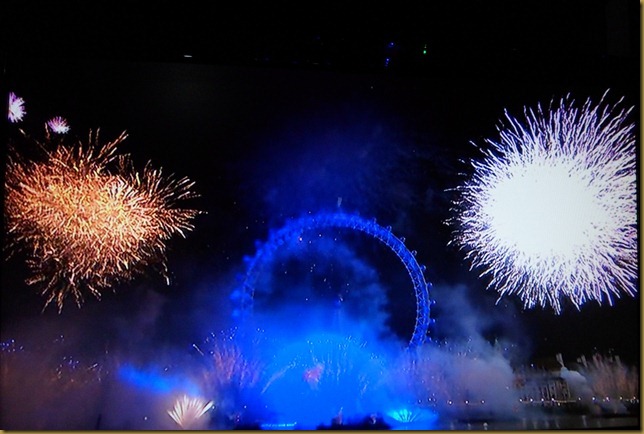

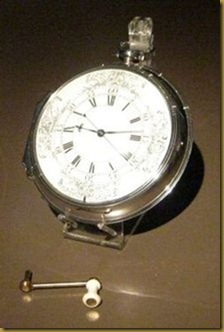
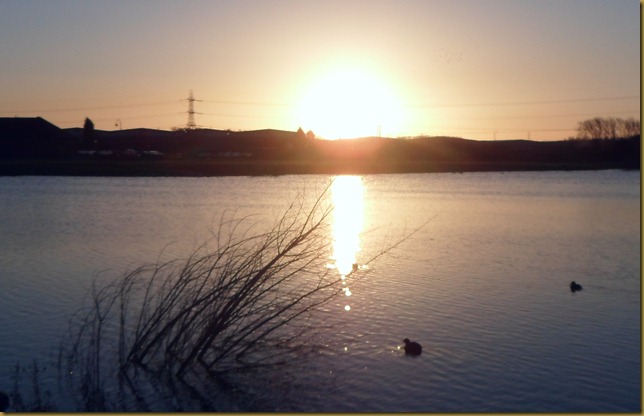
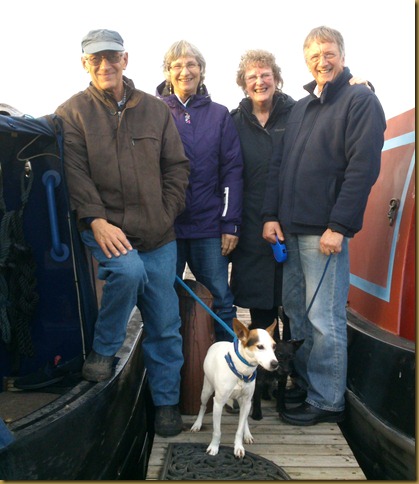
No comments:
Post a Comment